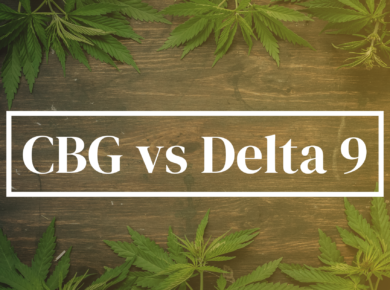CBDa and CBL, two notable cannabinoids within the extensive hemp and cannabis panorama, hold distinct properties and origins, offering a myriad of potential applications in the burgeoning world of cannabinoid products. Let’s delve into their unique worlds and understand what sets them apart.
CBDa, standing for Cannabidiolic Acid, emerges as a non-psychoactive cannabinoid found in raw and unheated cannabis or hemp plants. Acting as a precursor to CBD (Cannabidiol), CBDa transforms into CBD through a heat-driven reaction known as decarboxylation, which can be expedited via methods such as smoking or baking.
Conversely, CBL or Cannabicyclol is a lesser-known, non-psychoactive cannabinoid present in minimal concentrations within the cannabis plant. It materializes through the degradation of other cannabinoids, primarily CBC (Cannabichromene).
While both CBDa and CBL contribute to the rich tapestry of cannabinoids found within hemp and cannabis, their origin, formation, and prevalence in plants significantly differ. It is pivotal to highlight that research into these cannabinoids continues, and their full spectrum of effects and potential applications remain under exploration.
Remember, the regulatory status of cannabinoids can fluctuate across different states and countries. Always acquaint yourself with local laws prior to purchasing or utilizing any cannabinoid products.
Many States allow hemp derived cannabinoids under the 2018 Farm Bill as long as they contain less than .3% D9 THC. Some States have explicitly banned cannabinoids like Delta 8, so check your local rules and regulations before purchasing.
Here’s the rules for Kush.com and more details
Frequently Asked Questions (FAQs)
What Are CBDa and CBL?
CBDa, or Cannabidiolic Acid, is a precursor to CBD and resides in raw cannabis or hemp plants. CBL, or Cannabicyclol, is a rarer cannabinoid, originating from the degradation of CBC (Cannabichromene).
How Are CBDa and CBL Extracted?
Typically, both CBDa and CBL are extracted using similar techniques, with the CO2 extraction method being predominantly used. This involves utilizing pressurized carbon dioxide to extract desired phytochemicals from the hemp plant.
What Distinguishes CBDa from CBL?
CBDa and CBL are distinguished by their chemical structures and interactions with the body’s endocannabinoid system. CBDa, a precursor to CBD, converts into CBD through decarboxylation, while CBL is formed from the degradation of CBC and is not as prevalent in the hemp plant.
Can CBDa and CBL Be Found in All Hemp Plants?
Although CBDa is generally present in most hemp plants, CBL is less prevalent. CBL tends to appear in older hemp plants as it forms from the degradation of CBC over time.
What Are the Applications of CBDa and CBL?
CBDa and CBL are explored for various uses. CBDa is often utilized in its raw form in dietary supplements and juices, while CBL, still undergoing research, is gradually gaining recognition within the scientific community for its potential applications. Note that comprehensive research is vital to fully apprehend their possible uses and effects.
Shop
Similar Product Searches You Might Be Interested In:
- Cannabidiolic Acid
- CBDa
- Cannabicyclol
- CBL
- CBC
- CBD
- Cannabinoid Supplements
- Hemp Extracts
- Cannabidiol Products
- CBD Juice
- CBD Dietary Supplements
- Raw Hemp Products
Medical Disclaimer
The provided information is for educational intentions only and should not be perceived as a substitute for professional medical advice. Ensure to consult your healthcare provider prior to utilizing any CBDa or CBL products.




